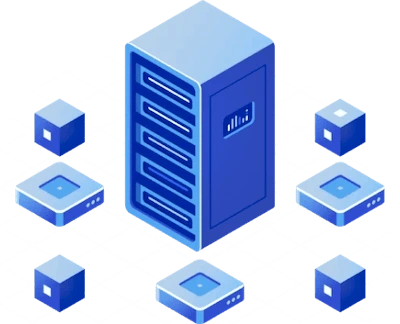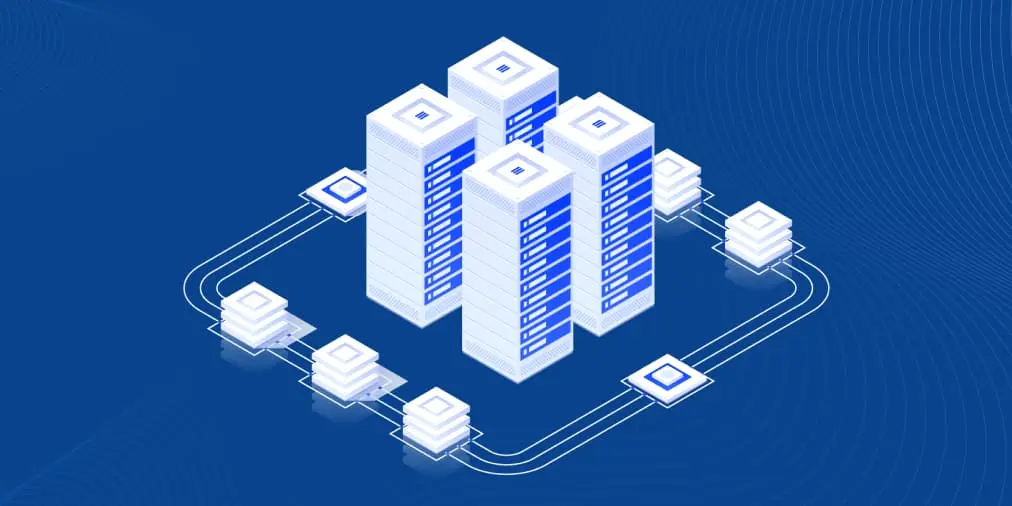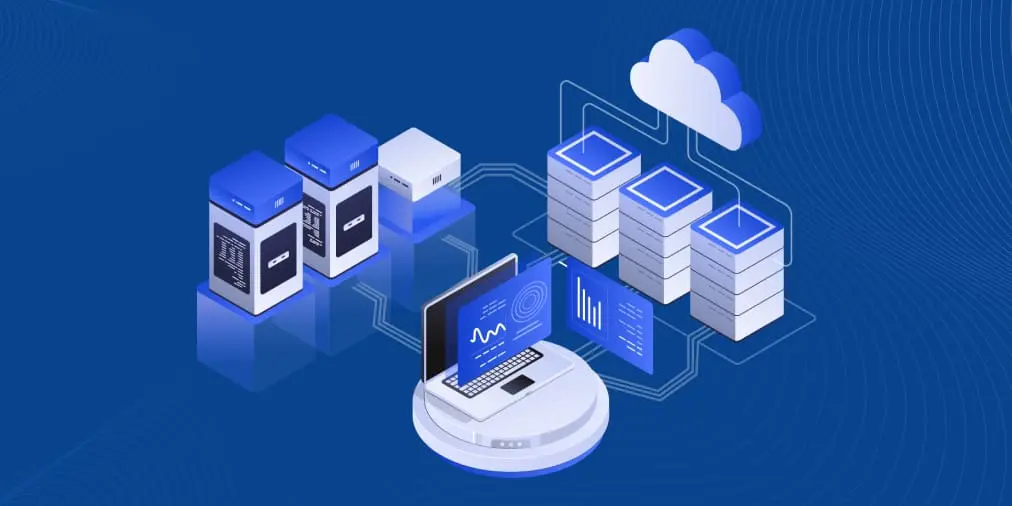Best Practices for Offsite Tape Storage: Short Overview
Creating onsite backups alone is not enough to guarantee data recovery in all data loss and disaster scenarios. If onsite backups are lost, damaged or encrypted by a ransomware attack, then data can’t be retrieved. For this reason, you need to have another copy of the backups stored on offsite storage. Tape is one of the most reliable types of storage to be used for offsite backup and long-term retention.
What Is Offsite Tape Storage?
Offsite tape storage is a type of storage where a copy of the data is stored on tapes that are located on a site different from the primary site.
Tape is a type of storage media that stores data on a magnetic film strip. A tape drive is required to write data on and read data from the tapes. Tapes are then archived in relevant lockers called tape vaults, to be locked and stored in the appropriate conditions, with access to the vaults controlled. This process of storage in vaults is called tape vaulting.
A tape drive is a device into which you can insert a tape to be able to read and write data on tapes. The data on the tape is read and written sequentially, which means that all data must be accessed in order from the beginning.
Why Should You Store Backup Media Offsite?
Onsite backup might be lost, modified by error or encrypted by a ransomware attack. In such cases, offsite backup makes it possible to retrieve the data.
Here are some of the major reasons to store backup media offsite:
- Outages that hit a primary site won’t affect the offsite backup. Those outages can be the result of natural or man-made disasters like fire, floods, electrical hazards, etc.
- If the onsite backup storage experiences hardware or software failures that result in backup loss, then the offsite storage can be used to retrieve usable backups.
- If a ransomware attack encrypted onsite data and backups that are connected to the network, offsite storage backups can be used to recover the data.
- If an administrative mistake leads to backup or storage deletion, offsite storage backups can be used to restore what was deleted.
Key Advantages of Offsite Tape Storage
Tape is not the only medium used for offsite storage. Companies also use cloud storage in addition to other types like hard disk drives (HDD), optical discs (OD), solid-state drives (SSD), etc. to store data away from the primary site.
The main common limitation among these types is the cost. The cost of these types of storage is higher than the cost of tape storage. On the other hand, data stored on these types of storage can be read faster than the data stored on tapes. However, the advantages of tape and the limitations of other storage medium types make offsite tape storage a reasonable choice for long-term archiving.
One of the growing offsite storage options is public cloud platforms. Let’s quickly look at how they differ from tape before covering tape backup advantages.
Offsite cloud storage
The offsite backups can be stored on cloud storage, through an online connection between the primary site and the cloud storage. Here are some limitations of this option:
- As a result of the online connection the cloud storage backups might be affected by onsite disasters like a ransomware attack. Note that you can avoid this kind of scenario with the immutability function in cloud storage.
- Moreover, this method depends on the internet connection availability. If the internet connection is lost, then data can’t be backed up or retrieved.
- Last but not least, downloading backups from the cloud storage adds to the cost, which doesn’t make this option a cost-effective one. Most cloud providers charge their customers for data egress, that is transferring data from the cloud to the internal network.
The cloud, however, remains an attractive option for many organizations. Advantages include:
- The pay-as-you go model, where minimal investment is required at the start and you only pay for what you use.
- This also means that public clouds are easily scalable as your backup infrastructure grows.
- The vendor is responsible for platform maintenance and availability.
- Cloud platforms are reliable, as they rely on geographical redundancy.
- Cloud platforms offer anti-ransomware features like immutability to protect data against corruption, encryption, and deletion.
Offsite tape storage benefits
Tapes can store backup copies and can be ejected and transferred to an offsite location. Offsite tape storage delivers the following key benefits:
- Air-gap. Tape storage can be disconnected from the network. This creates an air gap between offsite tape storage and the primary site. This advantage ensures maximum data protection to the offsite tape backups because data is isolated from any onsite disaster.
- Immutability. Writing to Linear Tape-Open (LTO) tapes can be secured using the write-once-read-many (WORM) feature. This strategy means that data can be written to tapes only one time. Data can then be accessed for reading only, and thus can’t be altered or deleted.
- Large storage capacity. The large storage capacity of tapes, in addition to the compression feature that tape supports, makes offsite tape storage a good option for archiving large amounts of data. Some LTO tapes (like LTO 9) have a compression ratio of 2.5:1, which means that tape is capable of storing data of an initial size higher than the capacity of the tape. For example, if a tape’s native capacity is 1 TB, and it supports a 2.5:1 compression ratio, then the backed-up data can be 2.5 TB.
- Low cost. Tape storage is cheaper than HDD and SSD. This also means that the cost of scaling up offsite tape storage is less costly compared to other types of storage like the cloud or disk-based options. In addition, according to manufacturers, tape has a long lifespan, it can live up to 30 years if stored under proper conditions. The cost of storing data in the cloud for 30 years is very high.
Offsite Tape Storage Limitations
Despite numerous benefits, offsite tape storage also has some limitations that should be considered:
- There is an added time to the recovery process to bring the tapes from the offsite storage site to the primary site. In contrast, offsite cloud storage can deliver the backup instantly onsite if the backup size is small and the download speed is high.
- The offsite storage site should have proper storage conditions for tapes. Humidity, high temperature, dust and a high magnetic field can affect the condition and lifespan of tape storage, which might lead to backup corruption or loss.
- Partial data recovery from offsite tape storage is slower than that of disk-based and cloud-based offsite storage. This is because data stored on tapes is read sequentially. The tape drive searches the entire backup from the beginning in order to find and restore the needed data. While in other types of storage like cloud or HDD, data to be recovered can be reached directly because they use other technologies that don’t write/read data in sequence. For example, HDD uses heads that move over a magnetic plate to read data directly.
Offsite Tape Storage Best Practices
Follow the best practices below to have secure, durable and efficient offsite tape storage:
- Schedule tape archiving tasks: Copy backups to tapes frequently based on your recovery point objective (RPO) policy of each data type. For sensitive data, the backup frequency should be high to ensure that the most recent data can be retrieved after a disaster. The sensitive data backups should also be copied to tapes frequently for the same reason.
- Scan tapes before archiving: Scan tapes for threats, viruses and malware before sending to offsite storage. This is important to prevent a threat from being migrated to the secondary site.
- Apply the 3-2-1 strategy: Keep three copies of data, on two different storage media with one of them offsite. This strategy ensures maximum data availability for most scenarios. Having the original data plus two backups – one onsite and the other offsite – increases data resiliency. This strategy also protects against site-level disasters because the second backups are stored offsite.
- Choose a close offsite location: The secondary location should be different from the production site but not far. This ensures faster retrieval of offsite tapes during a disruption to meet your recovery time objectives (RTOs) policies.
- Good storage conditions: Store the tapes in a place that is not exposed to heat, humidity, dust, etc. Good storage conditions maximize the lifespan of the tapes and protect the backups from being corrupted and lost.
- Label and inventory: Add a label and barcode to each tape you add to offsite storage. Keep track of backups by creating and maintaining an inventory list of the offsite tapes. Include in the inventory the backup date, the content of each tape and where it is stored in the tape vault. This saves time in the recovery process because it reduces the time to find the tape that contains your data during downtime.
- Recovery drill: On a regular basis, do a recovery testing drill to make sure the tape backup is still valid and that the data can be recovered in case of an unplanned outage.
- Secure the access: Restrict physical access to the offsite tape storage site, but make sure to grant access to at least two employees so that if one of them is not available during downtime, the second one gets the needed tapes to recover the data.
- Make tapes immutable and encrypted: Make use of the WORM tape feature (if supported) when writing to tapes to prevent altering the backups after they are archived. Moreover, make sure that encryption is enabled to provide maximum protection to the backed-up data.
Conclusion
It is important to have offsite backups to protect against onsite disasters like outages, ransomware attacks as well as storage and backup failures. The advantages of offsite tape storage are air-gapping, immutability feature of most tapes, large storage capacity with native compression and low cost. These advantages make offsite tape storage a reasonable option to consider for storing third copies of sensitive data or for archiving data for a long period of time. Some limitations also should be considered for offsite tape storage that can be minimized when the best practices are applied.
NAKIVO Backup & Replication can manage tape backups and can automate copying backups to tapes by using job chaining. You can use this feature to link jobs to run one after the other. For example, you can create a backup job to local storage and link it to another job to save a copy of the backup to tape. Furthermore, the solution manages tapes stored in different locations, searches for them and gets their location.




